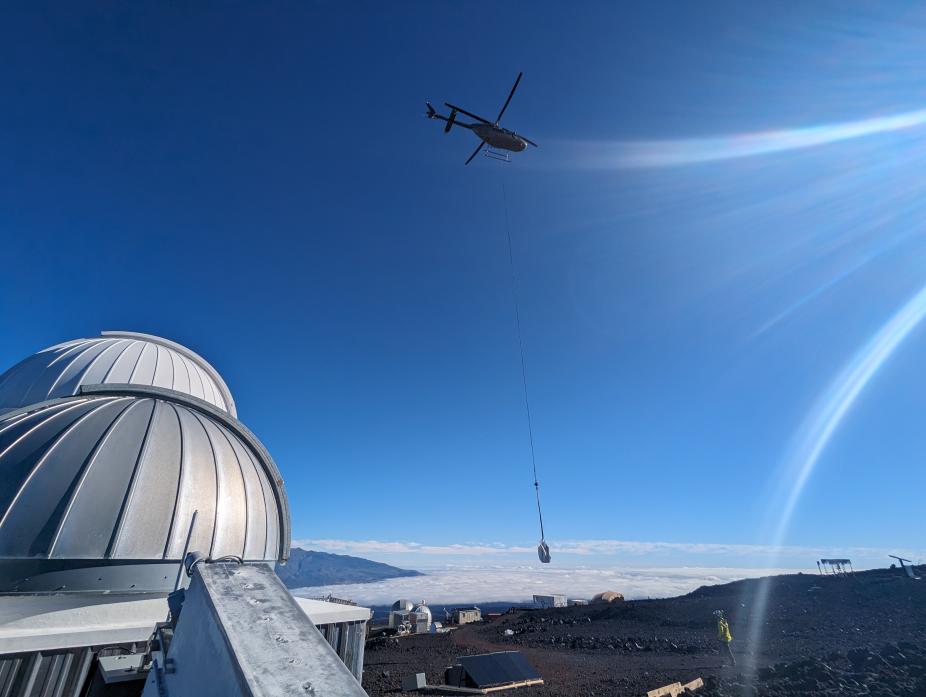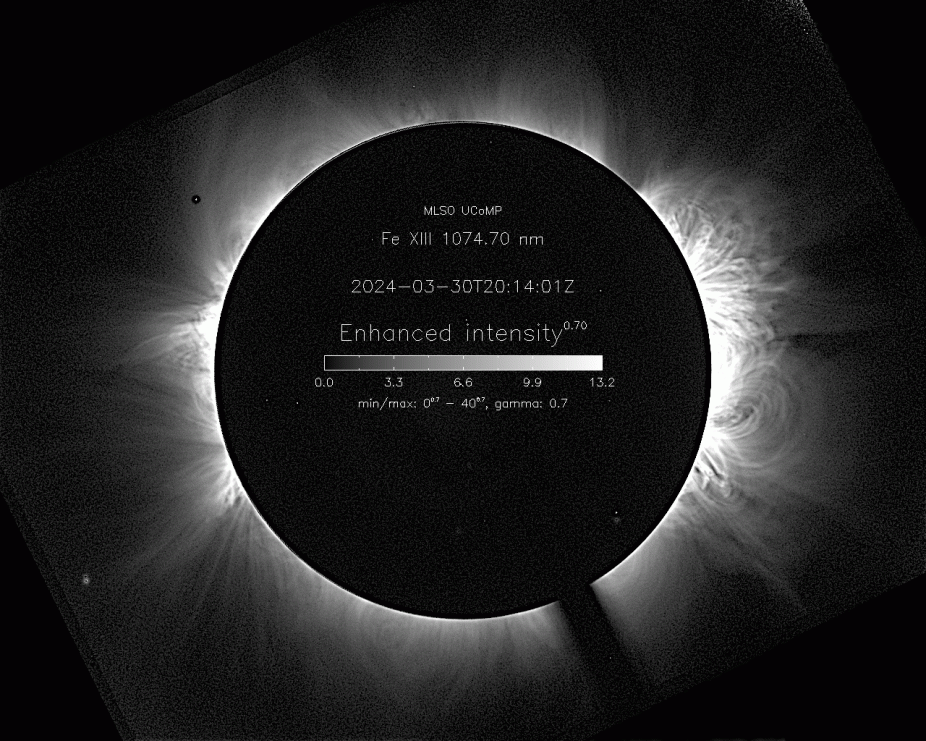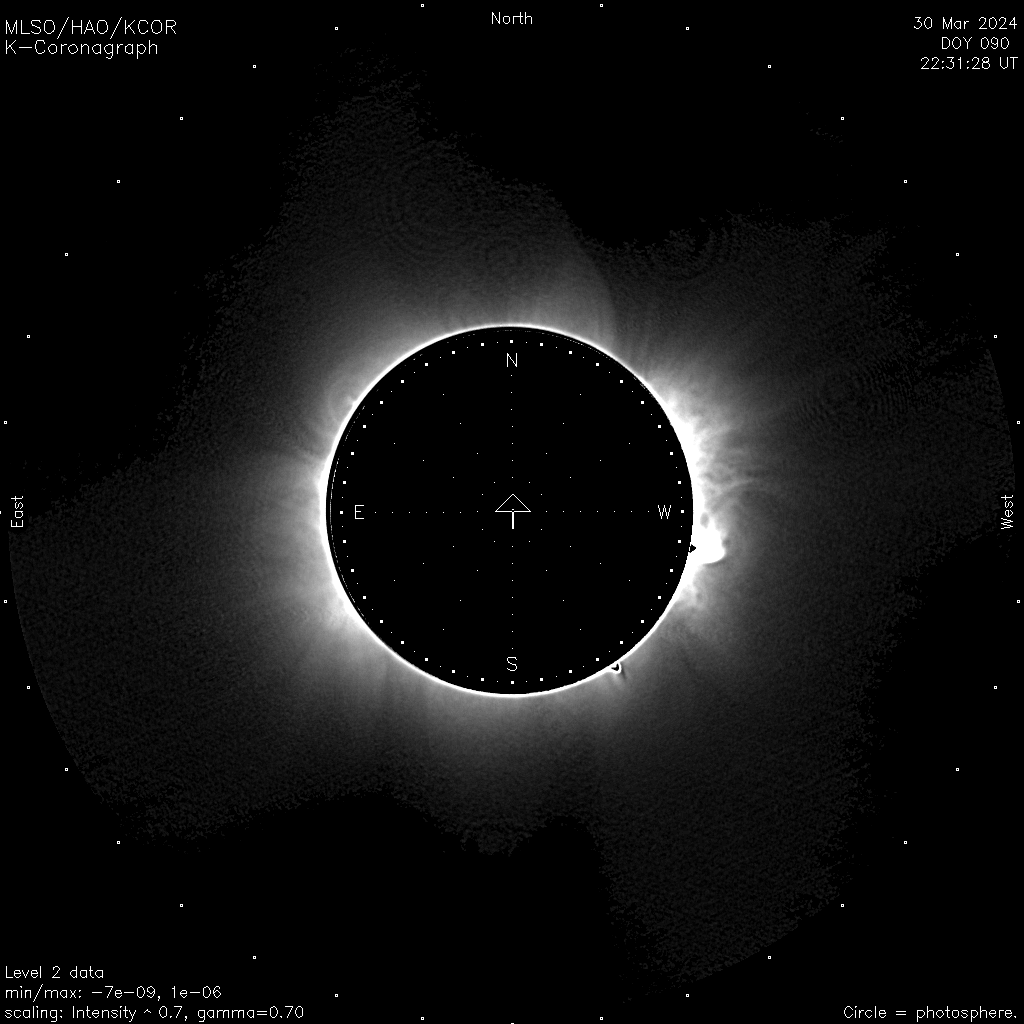
Helicopter flying in batteries and solar panels to MLSO located at 11,200 feet on Mauna Loa. The observatory domes are visible at left.
The Mauna Loa Solar Observatory (MLSO) has been closed since Nov 27, 2022, following the eruption of Mauna Loa that destroyed a large section of the only access road and the power lines. MLSO houses two coronagraphs, instruments that create artificial eclipse images, designed and built by NCAR HAO. These instruments provide unique observations of the solar corona, the outermost atmosphere of the Sun, that are used to study the magnetic field and plasma conditions in the corona, and solar eruptions known as Coronal Mass Ejections (CMEs). The observations from eclipse day will be used in conjunction with a wide array of eclipse observations captured by instruments on the ground and from space-based platforms. Eclipse observations will also be compared with models of what the solar corona is expected to look like on eclipse day.
During the days and weeks preceding the eclipse, MLSO and NCAR facilities have installed the generator and a few solar batteries with related equipment to provide daylight power for the instruments and dome and overnight power to instrument heaters. On March 30, 2024, Ben flew by helicopter to the observatory and was able to acquire the first coronal images since Nov 2022. The instruments are functioning and weather, permitting, we will be observing the day before and the day of the eclipse. An eclipse observing plan was designed with input from HAO and community scientists. Later this year, when all final permits are acquired, the solar panel array will be constructed and will provide power for MLSO operations for years to come.

An image of the solar corona on March 30, 2024 in infrared light of the iron (Fe) atom emission line at a wavelength of 1074.7 nm. This image was taken with the UCoMP instrument at MLSO. The temperature of the plasma seen in this image is approximately 1.6 million degrees. It is hot enough to strip 12 electrons from these iron atoms to create the ionized state known as Fe XIII shown in the picture.

A movie of an explosive event known as a coronal mass ejection (CME) is seen on March 30, 2024 (in the upper-left) from the K-Cor instrument at MLSO. This movie shows what you would see at a total solar eclipse. The movie was taken 9 days before the upcoming April 8 eclipse. The corona will look a little different on April 8 since the Sun rotates bringing slightly different-looking structures into view.
For information on the MLSO observing plan and other eclipse-day experiments and modeling efforts please see the WHPI 2024 eclipse campaign.